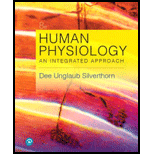
Human Physiology: An Integrated Approach Plus Mastering A&P with Pearson eText -- Access Card Package (8th Edition) (What's New in Human Physiology)
8th Edition
ISBN: 9780134701523
Author: Dee Unglaub Silverthorn
Publisher: PEARSON
expand_more
expand_more
format_list_bulleted
Question
Chapter 26.3, Problem 13CC
Summary Introduction
To determine: The pros and cons of using GnRH agonists as a male contraceptive.
Introduction: Male contraceptives are the methods of preventing pregnancy that solely involve male physiology. The common types of male contraception are vasectomy and condoms.
Expert Solution & Answer
Want to see the full answer?
Check out a sample textbook solution
Students have asked these similar questions
Green Algae, as a group, is actually paraphyletic with one subgroup more closely related to higher plants than the other. Which of the following green algae groups is more closely related to higher plants:
a. Charophyceans
b. Chlorophyceans
c. Rhodophyta
d. Xanthophyceans
A single-celled green algal genus that is motile with 2 flagella, has a cup shaped chloroplast, and an eyespot:
a. Volvox
b. Chlamydomonas
c. Euglena
d. Codium
A[n] ___ is produced by members of the Myxomycota when there is a lack of moisture.
a. plasmodiocarp
b. aethalium
c. sclerotium
d. plasmodium
Chapter 26 Solutions
Human Physiology: An Integrated Approach Plus Mastering A&P with Pearson eText -- Access Card Package (8th Edition) (What's New in Human Physiology)
Ch. 26.1 - Name the male and female gonads and gametes.Ch. 26.1 - Where in a target cell would you expect to find...Ch. 26.1 - Prob. 3CCCh. 26.1 - Which sex will a zygote become if it inherits only...Ch. 26.1 - If the testes are removed from an early male...Ch. 26.2 - The gametes in a newborn male are at what stage of...Ch. 26.2 - Compare the amount of DNA in the first polar body...Ch. 26.2 - How many gametes are formed from one primary...Ch. 26.2 - Prob. 9CCCh. 26.2 - Prob. 10CC
Ch. 26.2 - Prob. 11CCCh. 26.3 - What do Sertoli cells secrete? What do...Ch. 26.3 - Prob. 13CCCh. 26.3 - Which cells of the testes have receptors for FSH?...Ch. 26.3 - Prob. 15CCCh. 26.4 - Name the phases of the ovarian cycle and the...Ch. 26.4 - Prob. 17CCCh. 26.4 - Prob. 18CCCh. 26.4 - On what day of the menstrual cycle will a woman...Ch. 26 - Match each of the following items with all the...Ch. 26 - The Y chromosome contains a region for male sex...Ch. 26 - List the functions of the gonads. How do the...Ch. 26 - Define each of the following terms and describe...Ch. 26 - Trace the anatomical routes to the external...Ch. 26 - Prob. 6RQCh. 26 - Prob. 7RQCh. 26 - List and give a specific example of the various...Ch. 26 - Prob. 9RQCh. 26 - Prob. 10RQCh. 26 - Diagram the menstrual cycle, distinguishing...Ch. 26 - Prob. 12RQCh. 26 - Define and relate each of the following terms in...Ch. 26 - Compare the actions of each of the following...Ch. 26 - Prob. 15RQCh. 26 - Discuss the roles of each of the following...Ch. 26 - Prob. 17RQCh. 26 - Prob. 18RQCh. 26 - An XY individual inherits a mutation that results...Ch. 26 - Prob. 20RQCh. 26 - The following graph shows the results of an...
Knowledge Booster
Similar questions
- Which of the following is not true about the life-cycle of Fucus. a. 8 eggs per oogonium b. 64 sperm per antheridium c. eggs are flagellated d. sperm are flagellatedarrow_forwardGreen Algae, as a group, is actually paraphyletic with one subgroup more closely related to higher plants than the other. Which of the following green algae groups is more closely related to higher plants: a. Charophyceans b. Chlorophyceans c. Rhodophyta d. Xanthophyceansarrow_forwardCertain toxic terpenoids in this group is thought to deter herbivory but may also have some anti-tumor activity? a. green algae b. brown algae c. red algae d. golden algae e. none of thesearrow_forward
- In the cellular slime molds, the most common phase is: a. plasmodium b. pseudoplasmodial c. single cells as myxamoebae d. moundingarrow_forwardWhich of the following descriptive terms does not describe Hydrodictyon? a. colonial b. nonmotile c. 1 large reticulated chloroplast in each cell d. all of these describe Hydrodictyonarrow_forwardWhich of the following does not apply to Chara? a. "stoneworts" b. isogamous c. calcified walls d. apical growth with an axis and branchesarrow_forward
arrow_back_ios
SEE MORE QUESTIONS
arrow_forward_ios
Recommended textbooks for you
 Human Physiology: From Cells to Systems (MindTap ...BiologyISBN:9781285866932Author:Lauralee SherwoodPublisher:Cengage Learning
Human Physiology: From Cells to Systems (MindTap ...BiologyISBN:9781285866932Author:Lauralee SherwoodPublisher:Cengage Learning Biology 2eBiologyISBN:9781947172517Author:Matthew Douglas, Jung Choi, Mary Ann ClarkPublisher:OpenStax
Biology 2eBiologyISBN:9781947172517Author:Matthew Douglas, Jung Choi, Mary Ann ClarkPublisher:OpenStax
 Human Heredity: Principles and Issues (MindTap Co...BiologyISBN:9781305251052Author:Michael CummingsPublisher:Cengage Learning
Human Heredity: Principles and Issues (MindTap Co...BiologyISBN:9781305251052Author:Michael CummingsPublisher:Cengage Learning Biology (MindTap Course List)BiologyISBN:9781337392938Author:Eldra Solomon, Charles Martin, Diana W. Martin, Linda R. BergPublisher:Cengage Learning
Biology (MindTap Course List)BiologyISBN:9781337392938Author:Eldra Solomon, Charles Martin, Diana W. Martin, Linda R. BergPublisher:Cengage Learning Biology: The Dynamic Science (MindTap Course List)BiologyISBN:9781305389892Author:Peter J. Russell, Paul E. Hertz, Beverly McMillanPublisher:Cengage Learning
Biology: The Dynamic Science (MindTap Course List)BiologyISBN:9781305389892Author:Peter J. Russell, Paul E. Hertz, Beverly McMillanPublisher:Cengage Learning

Human Physiology: From Cells to Systems (MindTap ...
Biology
ISBN:9781285866932
Author:Lauralee Sherwood
Publisher:Cengage Learning

Biology 2e
Biology
ISBN:9781947172517
Author:Matthew Douglas, Jung Choi, Mary Ann Clark
Publisher:OpenStax


Human Heredity: Principles and Issues (MindTap Co...
Biology
ISBN:9781305251052
Author:Michael Cummings
Publisher:Cengage Learning

Biology (MindTap Course List)
Biology
ISBN:9781337392938
Author:Eldra Solomon, Charles Martin, Diana W. Martin, Linda R. Berg
Publisher:Cengage Learning

Biology: The Dynamic Science (MindTap Course List)
Biology
ISBN:9781305389892
Author:Peter J. Russell, Paul E. Hertz, Beverly McMillan
Publisher:Cengage Learning